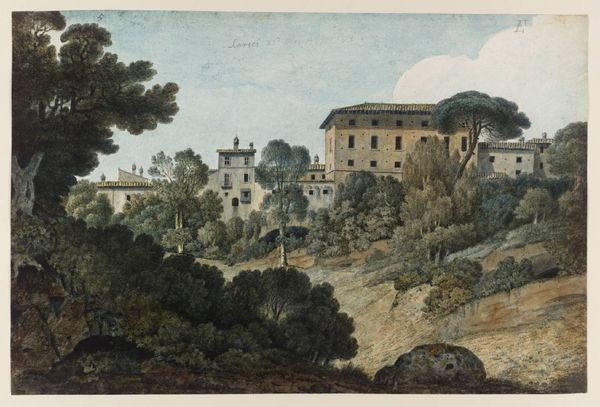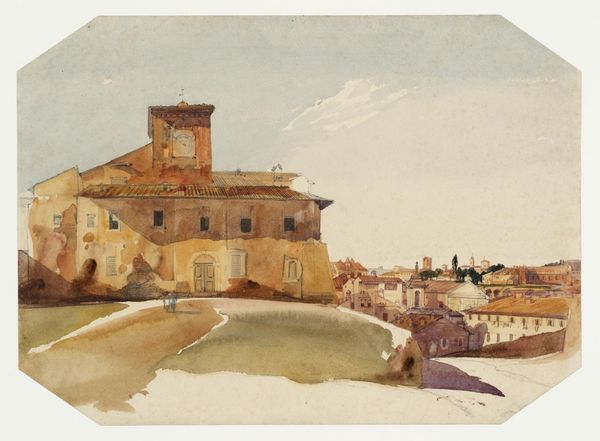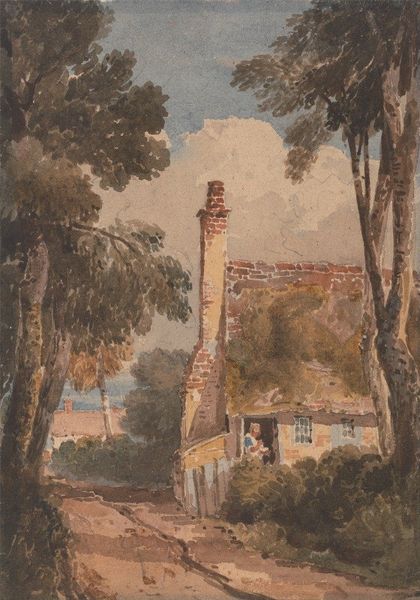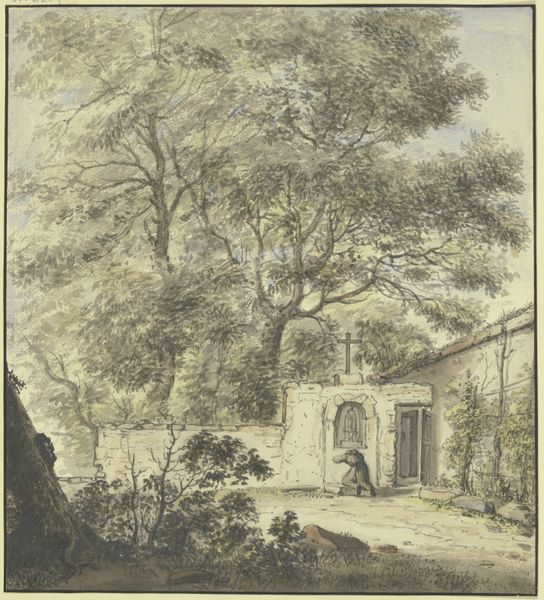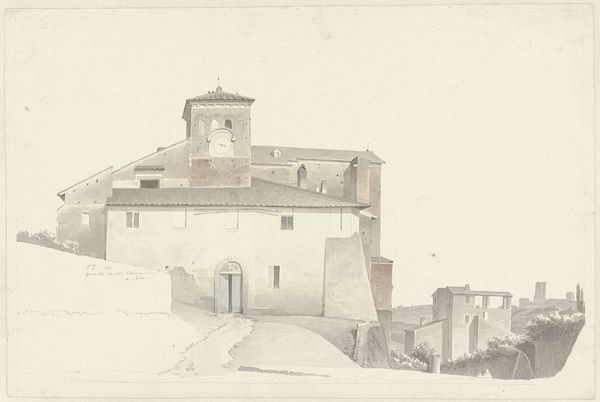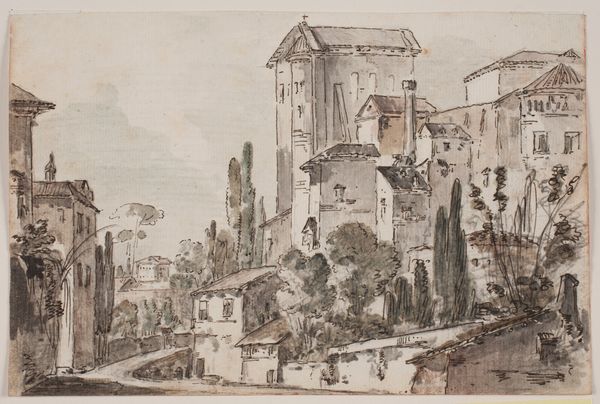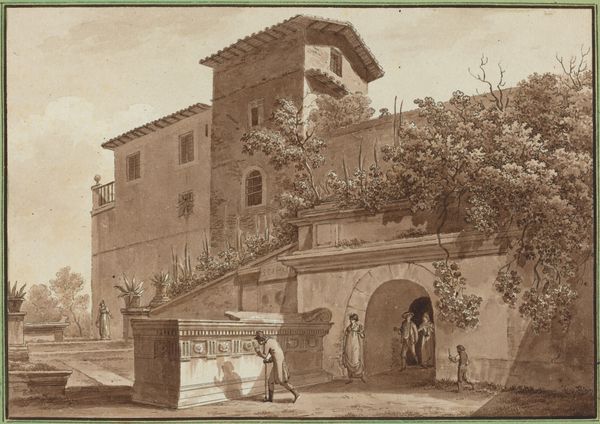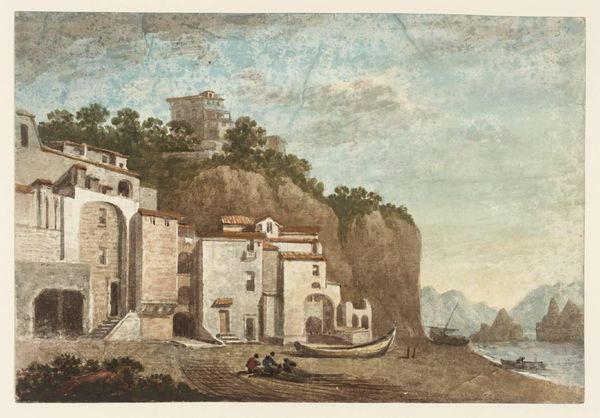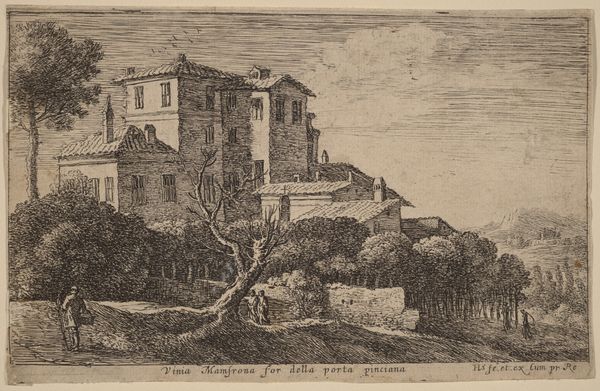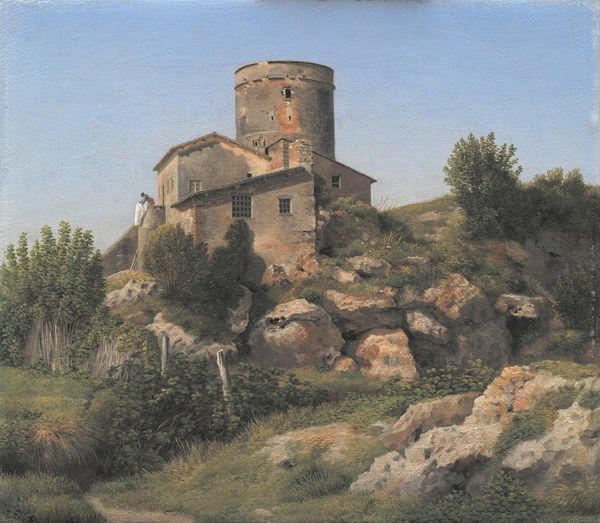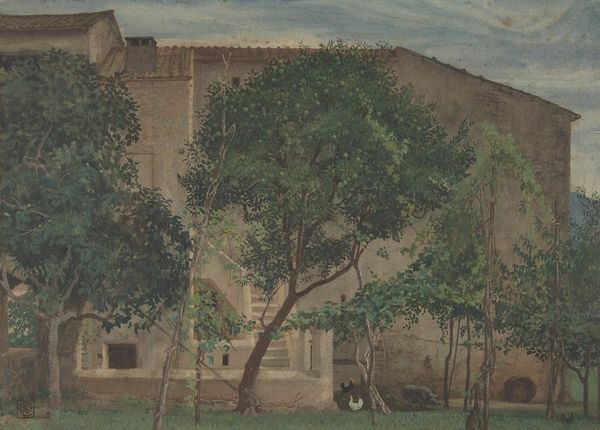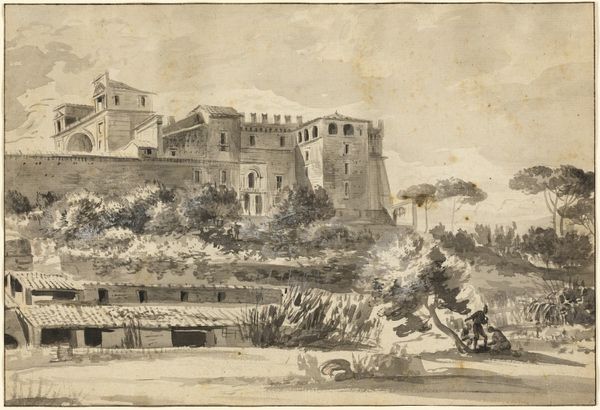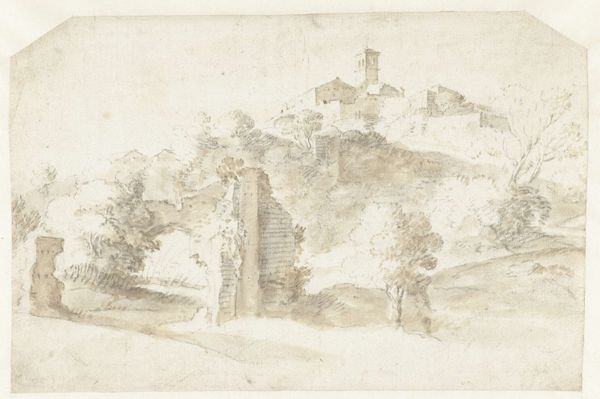
drawing, plein-air, watercolor
#
drawing
#
plein-air
#
landscape
#
watercolor
#
coloured pencil
#
romanticism
#
cityscape
Dimensions: 245 mm (height) x 207 mm (width) (bladmaal)
Editor: Here we have Fritz Petzholdt's "Raffaels atelier i Villa Borgheses have. Rom", created between 1805 and 1838, a plein-air drawing rendered in watercolor and colored pencil. I find the scene very tranquil. The muted tones create a sense of peace. How do you see this artwork, considering its historical context? Curator: This watercolor offers a glimpse into the romantic fascination with Italy and its artistic heritage, particularly Rome, which became a crucial destination and source of inspiration for artists. It wasn't just about admiring Renaissance masters, but about embedding oneself within a history, appropriating, even re-imagining it. Editor: Re-imagining, how so? Curator: Well, consider Villa Borghese itself. It wasn't simply a backdrop; it was a symbol of artistic patronage and classical ideals. By depicting it, Petzholdt situates himself and his artistic project within that lineage, asserting a continuity while also interpreting it for a new, burgeoning national romantic audience back in Denmark. The very act of drawing 'en plein air' signifies a new relationship to nature, filtering even established structures through that lens. Do you see how the drawing almost romanticizes architecture and its context? Editor: I see that. There is that connection to nature. How does that trend reflect artistic intentions during that period? Curator: It represents a broader shift where the immediacy of experience, conveyed through plein air work, began to carry increasing cultural and artistic value. This contrasted to academic history painting and contributed to democratizing artistic practice and the viewing of art. Editor: That is a big shift to focus on nature and the immediacy of experience instead of tradition. Curator: Indeed. Artists like Petzholdt participated in shaping the visual language of their time, influenced by emerging socio-political and institutional contexts. Think of the growing importance of art academies and public exhibitions at the time and who would be the target for the work to resonate with. Editor: I see! Thank you; that contextual backdrop has provided a deeper understanding.
Comments
No comments
Be the first to comment and join the conversation on the ultimate creative platform.
